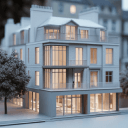3D home modeling software transforms client presentations significantly. Designers use this technology to create detailed visuals of projects. Clients understand design concepts better through 3D visualizations. Data shows that interactive 3D models increase client engagement by up to 70%. Architects report a 50% reduction in project approval times with 3D modeling.
3D home modeling software enables real-time modifications. Designers adjust elements like wall colors and furniture placement instantly during presentations. Clients provide feedback immediately, streamlining the design process. Software like SketchUp and AutoCAD are popular choices among professionals for these tasks. They offer extensive libraries of materials and objects for accurate representation of design ideas.
Arcadium 3D stands out with its browser-based platform, targeting both interior designers and beginners. Unlike traditional software that requires installation and complex learning curves, Arcadium 3D simplifies the creation of 3D house plans. Users generate detailed models within minutes, making it an efficient tool for client presentations. This ease of use and accessibility positions Arcadium 3D as a valuable tool for professionals seeking to enhance their presentation capabilities and client engagement.
Contents:
Maximizing Client Engagement with 3D Home Modeling Techniques
How can virtual walkthroughs revolutionize client presentations? Virtual walkthroughs allow clients to explore projects in a detailed, immersive manner, making abstract concepts tangible. These techniques offer a dynamic exploration of spaces, encouraging active participation and fostering a deeper understanding. By navigating through various rooms, clients can visualize spatial arrangements, material textures, and lighting effects more effectively.
What role do interactive elements play in enhancing presentations? Interactive elements, such as customizable furnishings and adjustable lighting, engage clients by offering control over their envisioned space. This customization leads to a personal connection with the design, as clients experiment with different layouts, color schemes, and decor. Such interactivity ensures the client's needs and preferences are precisely addressed, increasing satisfaction and investment in the project.
Why is feedback integration crucial during presentations? Incorporating real-time feedback allows for immediate revisions, demonstrating flexibility and attention to client desires. This process transforms the presentation into a collaborative effort, ensuring the final design aligns with the client's vision. Adjustments to room sizes, color choices, and material selections can be made on the spot, significantly enhancing project outcomes and client approval rates.
In engaging clients through 3D modeling techniques, these methods prove significantly more effective than traditional flat blueprints or static images. Virtual walkthroughs offer a richer, more detailed experience, whereas interactive elements foster a sense of ownership and customization not possible with standard presentations. Real-time feedback mechanisms provide a level of collaboration and adaptability, elevating client satisfaction beyond the capabilities of conventional methods. Through these advanced techniques, professionals can achieve a higher degree of client engagement, ensuring a memorable and persuasive presentation.
Key Features of Leading 3D Home Modeling Software
What distinguishes the leading 3D home modeling software in the market? Advanced rendering capabilities, undoubtedly. These programs allow designers to create photorealistic images of interior and exterior spaces, transforming basic sketches into vivid, lifelike visualizations. High-quality rendering enables architects and designers to showcase lighting effects, textures, and materials with remarkable clarity.
How do these tools enhance collaboration among stakeholders? Through cloud-based sharing features. This functionality facilitates real-time feedback and revisions, ensuring that clients, contractors, and designers stay aligned throughout the design process. Projects evolve seamlessly, with changes updated instantly for all parties to review, reducing miscommunications and project delays.
What role does customization play in these software solutions? A central one. Users can tailor features such as furniture, fixtures, and finishes to meet specific client needs, making each design project unique. This adaptability extends to the software's interface, which can often be personalized to streamline the design process, improve efficiency, and meet the diverse needs of various users.
In terms of user support and learning resources, top-tier software tends to surpass its competitors by offering extensive tutorials, active user communities, and responsive customer service teams. These resources prove invaluable for beginners mastering the software or experienced users exploring advanced features. Moreover, leading solutions often integrate with other design tools, enhancing productivity by facilitating a smooth workflow across different stages of the design process.
Navigating User Interfaces Effectively in 3D Design Programs
How do interfaces in 3D design programs differ? Each interface varies significantly from another, offering unique tools and features. For example, some programs prioritize simplicity, making them accessible for beginners, whereas others focus on detailed customization options for experienced designers. This variance ensures that users can select a software that best meets their specific project needs and expertise levels.
What makes navigation in these programs easier? Learning shortcut keys and utilizing navigation panels greatly simplifies the process. Shortcut keys allow for quick access to frequently used functions, speeding up the design process. Navigation panels, on the other hand, provide a visual overview of the project, enabling easy adjustments to different views and angles. Together, these features reduce the time spent on manual adjustments, allowing for a more efficient workflow.
Why is understanding the software's capabilities crucial? It ensures the creation of more realistic and detailed designs. Familiarity with the software's rendering options, for instance, allows for the production of high-quality visuals that can better convey the final look of a project. Texture mapping and lighting effects, as subtypes of rendering options, add depth and realism to the designs. Mastering these elements can significantly enhance the presentation, making it more compelling to the client.
Proficiency in navigating these interfaces often results in a more polished and persuasive presentation than relying solely on traditional 2D blueprints. Demonstrating a project in 3D allows clients to visualize the space in ways flat drawings cannot. It highlights the designer's attention to detail and understanding of the client's vision, often leading to quicker approval and fewer revisions. This effectiveness stems from the direct manipulation of elements within the software, offering an immediate and immersive experience that 2D methods lack.
Enhancing Visuals with Advanced Rendering Options
How does advanced rendering elevate presentation visuals? By offering tools for creating lifelike images. These tools interpret light, shadow, and textures, producing visuals that closely mimic reality. Architects harness sunlight and artificial light simulations, ensuring interiors appear bright and inviting or cozy and intimate, depending on the desired effect.
Why integrate advanced rendering for client presentations? To set projects apart in competitive markets. Detailed textures – such as polished wood, soft leather, and rough stone – add depth and authenticity to designs. This approach communicates the tactile qualities of materials, allowing clients to feel the warmth of sunlight through windows or the cool breeze from an open space, enhancing their emotional connection to the project.
What advantages do dynamic lighting options offer? They provide flexibility in showcasing designs at different times of the day. Designers use these options to demonstrate how natural and artificial light plays across surfaces, revealing the interplay of shadows and highlights that give spaces character. This variability ensures that designs are not static, inviting clients to envision living or working within the space throughout changing seasons and times of day.
In the visualization process, advanced rendering options outshine basic techniques by transforming flat, uninspiring sketches into immersive, three-dimensional experiences. Where standard methods fail to capture the subtleties of light and texture, advanced rendering excels, bringing materials to life with stunning accuracy. This not only helps in conveying the designer's vision with greater clarity but also in evoking a stronger emotional response from the client, making it an indispensable tool in the arsenal of modern architectural visualization.
Incorporating Client Feedback Seamlessly into 3D Models
How can client feedback be seamlessly integrated into 3D models? First, one must gather detailed feedback from clients, focusing on specific elements such as colors, textures, and space arrangements. Effective communication tools, such as comment sections within the software or external communication platforms, provide clear channels for feedback. This process ensures that every adjustment, like changing a wall color from blue to green or altering the texture of living room upholstery from leather to velvet, is accurately captured and applied.
What tools within 3D home modeling software assist in incorporating feedback effectively? Various features, including drag-and-drop interfaces and real-time editing capabilities, play crucial roles. These functionalities allow for immediate changes; for example, resizing rooms or adjusting lighting settings can be done swiftly. Consequently, architects and designers can quickly implement changes, such as enlarging a dining area or increasing the natural light in a bedroom, demonstrating flexibility and responsiveness to client needs.
Why is it essential to maintain an iterative process for feedback integration? This approach enables continuous refinement of the design, ensuring that the final model meets or exceeds client expectations. By employing version control and iterative design processes, designers can track changes over time, offering opportunities for comparison and reflection at every stage. It means adjustments, like repositioning furniture or tweaking exterior materials from brick to stucco, are systematically evaluated, ensuring the client's vision is accurately realized.
Incorporating client feedback into 3D models proves more efficient than traditional 2D blueprints, enhancing client satisfaction and design accuracy. 3D models offer a dynamic view of changes, like the impact of shifting a wall or altering a room's dimensions, which is less apparent in 2D representations. This method fosters a collaborative environment, as clients can visualize and adjust their input in real-time, leading to designs that more closely align with their preferences. This collaborative approach not only saves time but also significantly reduces the need for costly post-construction modifications.
Showcasing Realistic Scenarios through Virtual Walkthroughs
How does creating virtual walkthroughs improve client understanding? Significantly, by enabling clients to visualize spatial arrangements and design aesthetics within a virtual environment. Clients experience the spatial dynamics, appreciate the aesthetic appeal, and grasp the functional aspects of design proposals through immersive exploration. This approach aids in clarifying doubts, adjusting expectations, and refining design choices before any physical work begins.
What benefits do virtual walkthroughs offer over static images? Immensely, by providing an interactive experience that static images cannot. Users navigate the virtual space at their pace, focusing on details important to them, understanding the scale and relation between different elements, and experiencing the design from multiple viewpoints. This interactivity enhances engagement, fosters a deeper understanding of the project, and promotes a sense of ownership and satisfaction with the design process.
Can clients provide feedback more effectively through virtual walkthroughs? Undoubtedly, as the interactive nature of these presentations allows for immediate, informed feedback. Clients identify elements they wish to change, suggest alternatives, and communicate their preferences clearly, facilitating a collaborative design process. Designers, in turn, receive precise feedback, making it easier to implement changes accurately and efficiently, thereby streamlining the design iteration process.
Virtual walkthroughs outshine traditional presentations by offering a more immersive, informative, and interactive experience. They engage clients more deeply than flat renderings or scaled models, enable a more precise feedback loop, and simplify the visualization of complex spatial relationships. This method fosters a richer understanding, ensuring clients are more informed, more involved, and more satisfied with the final design.
Cost-Benefit Analysis: Investing in Premium vs. Free Software
Is investing in premium 3D home modeling software worth the cost over free versions? Absolutely. Premium versions offer advanced features, such as enhanced visualization tools and intricate design options. These tools enable architects to create more detailed and accurate models, whereas free versions often limit creativity due to their basic functionalities.
Do free software packages provide enough value for professional client presentations? Rarely. Free software might suffice for rudimentary sketches or initial concept discussions, but they fall short in delivering the polish required for professional settings. Clients expect detailed, immersive presentations that free options simply cannot supply, such as high-resolution renders and comprehensive walk-through capabilities.
How does the support and training differ between premium and free 3D modeling software? Significantly. Premium software typically comes with extensive customer support, including tutorials, user forums, and sometimes even one-on-one training sessions. This contrasts starkly with free software, which offers minimal support, leaving users to rely on general internet searches for troubleshooting and skill advancement.
In terms of cost-benefit analysis, investing in premium software often yields a higher return on investment for professionals. Premium software's advanced features lead to higher-quality presentations that can captivate clients and win contracts, justifying its initial expense. On the other hand, the limitations of free software can result in longer project times and potentially losing bids to competitors who present more polished proposals. Therefore, the investment in premium software not only enhances the quality of client presentations but also contributes to a firm's competitive edge in the market.
Maintaining a Competitive Edge with Up-to-Date 3D Design Technologies
Why should professionals stay abreast of the latest 3D design technologies? It ensures their offerings remain at the industry's forefront. Architects employ cutting-edge software to create lifelike models, engineers simulate structural integrity using advanced analysis tools, and interior designers visualize spaces with intricate detail. This constant evolution in technology propels the industry forward, setting new standards for quality and innovation.
What benefits do updated 3D design technologies offer? They enable the creation of more accurate and detailed models. For instance, new software versions enhance the realism of textures, such as the grain in wood or the weave in fabric, and improve the simulation of natural lighting, making spaces feel more inviting and realistic. These advancements allow for better communication of a project's vision, reducing misunderstandings and setting clear expectations.
How do these technologies impact client presentations? They transform them into immersive experiences. Clients can take virtual tours of their future homes, experiencing different layouts, materials, and design options with a clarity that flat drawings cannot provide. This immersive experience helps clients make informed decisions, fosters a deeper connection with the project, and significantly increases client satisfaction.
In maintaining a competitive edge, staying current with technological advancements proves more beneficial than adhering to outdated methods. Traditional 2D blueprints and sketches, while informative, lack the dynamic interactivity and comprehensive detail that modern 3D modeling software offers. This shift not only elevates the quality of presentations but also enhances the efficiency of the design process, allowing for rapid iterations and adjustments based on client feedback. As a result, professionals who leverage the latest technologies are better equipped to meet client needs, streamline their workflow, and ultimately, secure a prominent position in the industry.


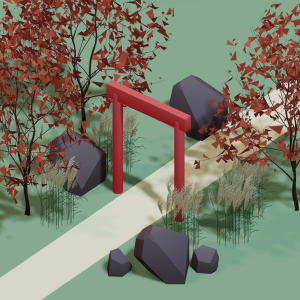 All training, tips and articles
All training, tips and articles
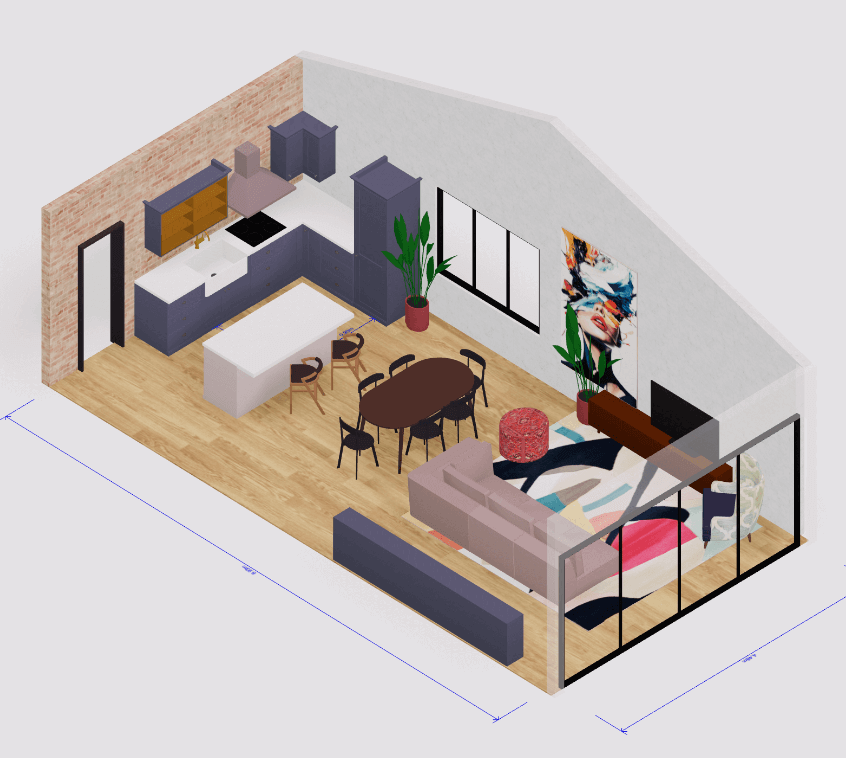 3D house design tool
3D house design tool
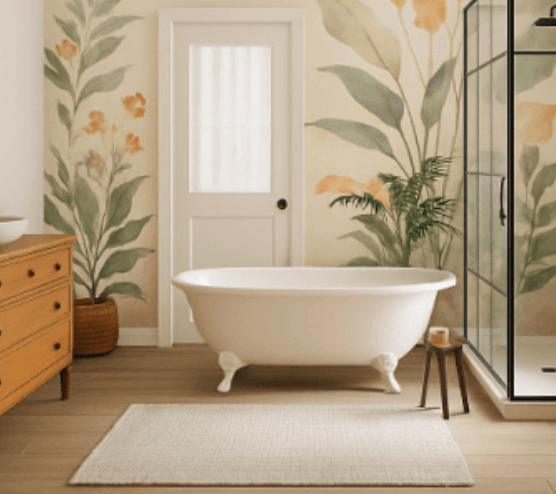
 Color palette generator
Color palette generator
 Floor plan creator
Floor plan creator
 Interior design app
Interior design app
 Kitchen design tool
Kitchen design tool
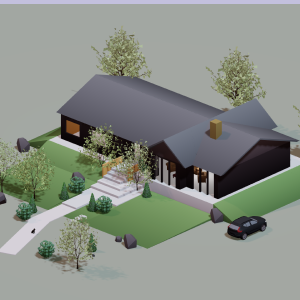 House design software
House design software
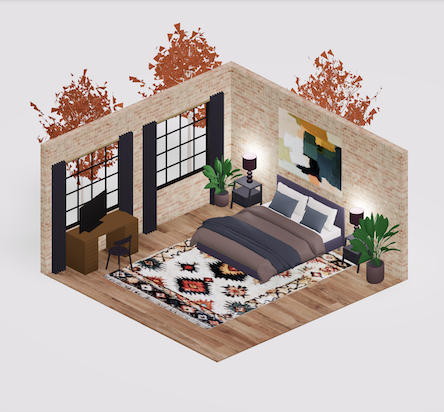 Room designer
Room designer
 Landscape design software
Landscape design software
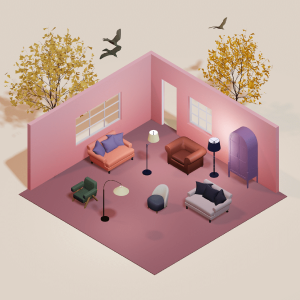 Bedroom design
Bedroom design
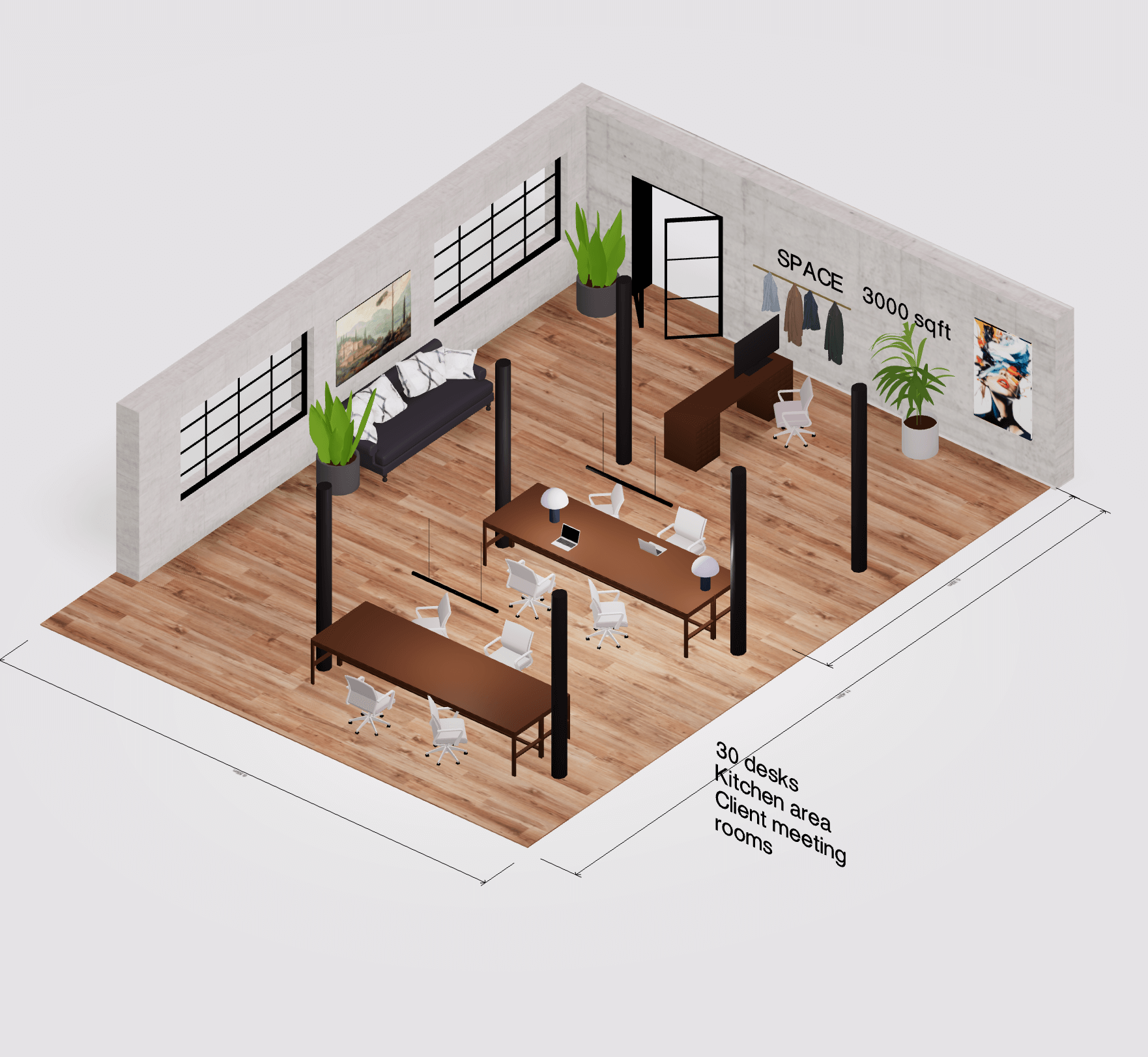 Office floor plan creator
Office floor plan creator
.png)



